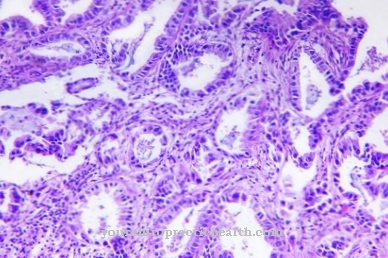Long time were General anesthesia Feared due to the many unpleasant side effects and were considered dangerous. Nowadays this only applies in exceptional cases due to the latest technology and the latest medication.
What is general anesthesia?

At a general anesthetic the patient is put into a kind of coma by so-called hypnotics. This happens through the administration of medication which "switch off" the consciousness.
In order to guarantee freedom from pain throughout the body, analgesics, i.e. strong pain relievers, are also given. In addition, relaxants are administered which relax the muscles. The medication can be administered intravenously, using an infusion tube, or with the air you breathe. The patient falls asleep in less than a minute.
His vital functions and the depth of the anesthesia are checked by the attending anesthetist during the entire procedure. The difference between general anesthesia and sedation is due to the fact that the patient cannot be awakened during general anesthesia and the impairment of the circulatory system and respiratory function is greater.
In contrast to general anesthesia, with local anesthesia the patient is conscious, only one area of the body is made pain-free.
Function, effect & goals
General anesthesia is used in a wide variety of operations. It has the advantage that the patients are unconscious during the procedure, i.e. they do not experience what is happening in the operating room.
In addition, the patient does not feel any pain and the relaxants can ensure that the patient does not move during the operation or that involuntary muscle twitches occur. Larger operations in particular can only be performed under general anesthetic be performed. The anesthesia is started with the administration of analgesics and hypnotics and is maintained during the entire course of the operation by continuously administering the necessary medication.
The administered mix of anesthetics ensures a coma-like state, freedom from pain, inhibition of the autonomic nervous system and relaxation of the muscles. The exact process of general anesthesia can vary from patient to patient, but there is a general procedure that is almost always followed. If the patient falls asleep, a ventilation tube is placed on him. On the one hand, this tube conducts air to the lungs, but it can also contain anesthetic gas, which is used to maintain the anesthesia until the end of the operation.
For operations that only take a very short time, it is sometimes sufficient to simply ventilate the patient through a mask. While surgeons perform the operation, the anesthetist monitors the circulatory situation and the depth of anesthesia of the patient; If necessary, he can give more medication or change the dose. When the operation is over, the anesthetist will stop the anesthetic medication and the tube will be removed. After stopping the anesthetics, it takes several minutes for the patient to regain full consciousness, during which time he is monitored in the recovery room.
You can find your medication here
➔ Medicines for painRisks & dangers
Even if General anesthesia feared by many people and classified as dangerous, they are very safe. Only in extreme cases does the patient develop life-threatening conditions due to the anesthesia. Thanks to the latest medication, technical aids to monitor the patient and the constant presence of a team of doctors and nurses who specialize in anesthesia during the operation, general anesthesia is very safe.
However, the individual risk does not only depend on the anesthetic itself, but also on the type and duration of the operation and the general health of the patient. Possible complications include cardiovascular problems, problems with ventilation or damage to teeth or mucous membrane tissue due to intubation and also allergic reactions to medications given.
Another risk is the leakage of stomach contents into the lungs, which can lead to severe pneumonia; It is therefore important not to eat anything for at least six hours before the procedure and not to drink anything at least two hours before. Just a few decades ago, severe nausea and vomiting were among the most common side effects after waking up from general anesthesia.
Nowadays such disorders, which also include flu-like symptoms such as hoarseness and sore throat, have become much rarer after the operation and are more the exception than the rule.













.jpg)

.jpg)
.jpg)











.jpg)